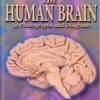Nessun prodotto nel carrello.
Modeling and Data Treatment in the Pharmaceutical Sciences
99,00€ 94,10€
–
Autore: di Jens T. Carstensen
Editore: CRC Press;
Collana: –
Solo 1 pezzi disponibili
COD: 9781566764407 Categorie: MEDICINA e VETERINARIA, SCIENZA E TECNOLOGIA
The intent of this text is to develop with the student or reader, an ability to look at data and draw all the possible inferences from them; evaluate such inferences statistically; and then, most importantly, to form a picture, mathematically or not, of the actual process that is responsible for the responses. Hence, it has an aim to create an awareness of the use of statistics in pharmaceutical experimentation. This awareness transcends the rote use of canned programs in computers.
Aside from addressing the use of statistics and computers for data analysis, many examples in the book point to the dangers of such use without thoughtful understanding of the principles involved. However, the ultimate aim of the book is the ability to use data to model a situation, a phenomenon, or a process and to logically decide on further experimentation. The author has experienced countless situations where someone ( a client, a student) would say that experiments were performed but that they were inconclusive, where, in reality, they were quite conclusive.
This book concentrates on how to derive a model from existing data, how to plan further to shore up the model and what statistical, mathematical and programming data is associated with it. The emphasis is on modeling, the application of correct statistics and on common errors in published material. The procedures for modeling are outlined.
Cod: 9781566764407
| Autore | |
|---|---|
| Editore | |
| Anno | |
| Pagine | |
| Formato |
Recensisci per primo “Modeling and Data Treatment in the Pharmaceutical Sciences” Annulla risposta
Prodotti correlati
-5%
MEDICINA e VETERINARIA
-5%
SCIENZA E TECNOLOGIA
L’universo elegante. Superstringhe, dimensioni nascoste e la ricerca della teoria ultima
-5%
SCIENZA E TECNOLOGIA
Chi nutrirà il mondo? Manifesto per il cibo del terzo millennio
-5%
SCIENZA E TECNOLOGIA
-5%
SCIENZA E TECNOLOGIA
Una bellissima domanda. Scoprire il disegno profondo della natura
-5%
SCIENZA E TECNOLOGIA
-5%
SCIENZA E TECNOLOGIA
-5%
SCIENZA E TECNOLOGIA












Recensioni
Ancora non ci sono recensioni.